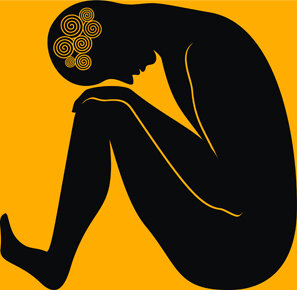Healing Trauma and PTSD
PTSD and Trauma: How to heal
Maybe you’ve heard the word trauma be used before but are not sure what people mean when they say it. Are they referring to ER room trauma units who help people stay alive after a serious accident? Or perhaps you’ve heard it used in the context of war veterans and their stories, many experiencing things no one could ever fathom. In the world of psychology the term trauma has been adopted to include exposure to accidents, violence, abuse or even a lack of care and support growing up. Only within the last 50 years have psychologists begun to understand the emotional imprint these events leave on our bodies and minds. As if stuck in a perpetual loop, our nervous system can be in constant alert, ready for another moment similar to the awful experiences we encountered. This can force us to live in the past, never fully being free to experience the goodness of the world around us.
There are two main categories psychologists use today when referring to trauma. Big T-trauma speaks to physical events such as car accidents, physical violence or sexual assault that cause people harm. The other category is referred to as developmental trauma, associated with an abusive relationship or deprivation of care and love. If a combination of these two are experienced, the term is referred to as complex trauma as both relational and physical elements were involved.
In situations where childhood developmental trauma is involved, we can often shut ourselves down in the face of overwhelming circumstances. In this process we can loose touch with our own authentic needs in order stay alive. Developmental trauma can take the form of abusive parents who belittle us, creating a world of shame and guilt without any understandable reason. Children often develop in response to these circumstances in order to survive unusually difficult circumstances. Coming into the world vulnerable and dependent on others for their survival, kids often suppress parts of themselves in order to make it through the turbulence of childhood. These adaptive responses are crucial for staying alive when young, yet may no longer be supportive in adulthood. Many don’t realize they carry these old ways of relating to others with them today, hindering an ability to bring their full selves to adult relationships.
As a therapist I find myself helping clients bring these old and often out dated patterns formed by trauma to light. I help them explore and discover the places in their adult lives that are actually keeping them in the past. I follow what story my clients` bodies are telling them, bringing awareness to protective patterns from childhood. From observing how startle responses show up, to becoming aware of how they hold and tighten their muscles, it is impressive to me just how much the body reveals. Through becoming aware of these body and breath constrictions, my clients can eventually find ways of feeling safe again in the present, relaxing defensive patterns that have protected them for years.
Learning to feel safe within our bodies can be challenging as it requires patience, support and a loving relationship. When the conditions are right, the natural healing mechanism within us can kick into gear, bringing about a reprograming and repatterining in our nervous system. While talk therapy can aid this process, it is important to work with a somatic or body oriented therapist. Somatic therapeutic approaches have been shown to be much more effective for healing from trauma. While it may feel overwhelming at times, healing is possible in today's world, given the enormous amount of research and insight psychology has gained in the last few decades.
For more information and resources feel free to explore some of the links below. You can also reach me at frank@franksthearpy.com
Peter Levine - Waking the Tiger - Insights on Trauma
Bessel Vander Kolk - The Body Keeps the Score - Trauma and the body
Gabor Mate M.D. - Authenticity - Children and Trauma


